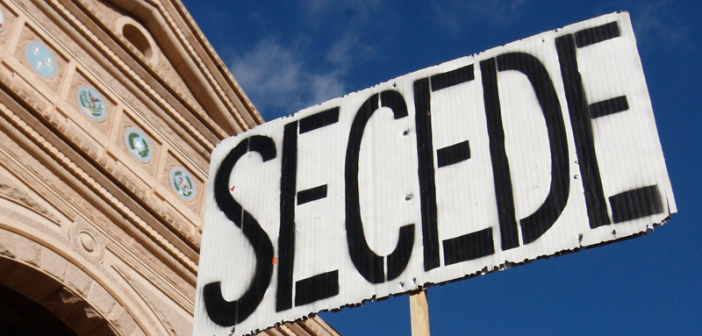As previously reported, Puerto Rico has amassed $72bn worth of debt. Last month, it defaulted on the full payment of its bonds, but has recently agreed to a debt restructuring plan with a group of its American bondholders. Puerto Rican officials have indicated that this step will allow the island to start to rebuild its economy.
However, some of the island’s population wants to sever all ties with the United States, and reunify with Spain. Indeed, this notion has gained a lot of traction in Puerto Rico. A 2012 referendum found that 54% of the island’s population was in favour of changing the island’s current territorial status. Also, it has recently been reported that the current financial crisis has incentivized Puerto Ricans to push for independence. Some though, believe that the secessionist movement is indicative of a lazy desire to take the easy way out of the recession.
Several separatist groups currently exist on the island. One such group is the autonomy for Puerto Rico association, which was established in 2012, and is comprised of 30,000 “unofficial and official” members. Ivan Arrache, the association’s leader, has said that the group is unhappy about the island being a “non-incorporated US territory”. Indeed, they believe that Puerto Rico would be better off reunifying with its motherland, which lies 6,424 km away. Arrache added: “We want to become an autonomous community of Spain with a different system of taxation and trade. We want to be with Spain but not blend with it.”
José Nieves Seise, founder of the Reunification of Puerto Rico with Spain group, also gave his opinion on the matter: “By returning to Spain, we’ll have autonomy. With autonomy Puerto Rico could have sufficient powers to boost the economy and attract foreign investment.” This Sunday at its annual assembly, the group will discuss further the idea of becoming Spain’s 18th autonomous region.
Seise maintains that Puerto Rico is not a Spanish colony, and said that contrary to popular opinion, the island was an ‘integral’ part of Spain, and that the US invasion in 1898 actually caused an involuntary separation between the two. He called attention to the fact that the split was actually very ‘superficial,’ as similarities between Spain and Puerto Rico cannot be ignored, and added: “Puerto Ricans love the Spanish people; we’re Spanish. We want to return to the country to which we belong.” However, the route to secession is barred by a huge obstacle: the 1898 Treaty of Paris, which laid out the steps that caused Puerto Rico to detach from its Spanish roots and become an American commonwealth island. If the secession were to actually happen, the treaty would need to be successfully contested. The successful contestation of the treaty would be an extremely difficult undertaking, if not an impossible one.
Regardless, the Reunification of Puerto Rico with Spain group is serious about Puerto Rico becoming a part of Spain again, and reportedly met with Spanish government officials at the consulate in Puerto Rico last year. Seise explained: “Our goal was just to let them know that our movement exists and that it’s something serious.” Seise has indicated that he will send a letter to Spanish King Felipe VI this month, in order to make him aware of the movement. As of yet, the Spanish government have apparently not issued a ‘formal response’ to the movement, though there is some evidence of backing in Málaga and Granada. Indeed, Seise has rejected claims that Puerto Rico had less freedom under Spanish rule, and has pushed the notion that joining the EU will allow Puerto Rico to genuinely overcome its debilitating economic situation. He has also indicated that he believes the island would receive more political rights if it were to join Spain, and has pointed out that citizens of the island aren’t even allowed to vote for the president of the United States.
Arrache commented: “[Is Spain] going to leave us to do all the work ourselves? It takes two to tango.” He added: “[Doesn’t Spain] appreciate the impact [taking us into their fold]would have against Catalan separatism and how this would help foster the idea of a united Spain?” Indeed, the Catalan region of Spain is currently readying itself for a vote that its separatists are calling the first step to independence from the country. Approximately 12 Spanish citizens launched a secessionist support group in January.
Member Cristofer Pons Rodríguez commented: “Personally, I was attracted to the idea of creating a community of citizens that share the Spanish culture. It would be about creating a Hispanic bloc as an alternative to the Anglo-Saxon world, to defend our interests.” Many Spaniards are said to be concerned that taking in Puerto Rico and its debt will derail Spain’s current recovery from its double-dip recession. However, Rodríguez countered this belief with the following statement: “This shouldn’t be an impediment to working together. The more united we are, the better chance we have of overcoming issues like debt.”






